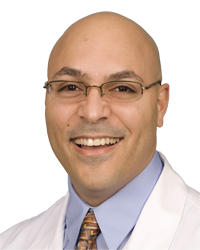Managing Pupil Dilation in Femtosecond Laser Assisted Cataract Surgery
 Donald Downer, MD, is a cornea surgeon with expertise in laser cataract surgery, lifestyle intraocular lenses, diseases of the cornea, corneal transplantation, ocular surface reconstruction and ocular infectious disease. He also serves as an adjunct clinical professor at the University of Florida where he trains young surgeons.
Donald Downer, MD, is a cornea surgeon with expertise in laser cataract surgery, lifestyle intraocular lenses, diseases of the cornea, corneal transplantation, ocular surface reconstruction and ocular infectious disease. He also serves as an adjunct clinical professor at the University of Florida where he trains young surgeons.
Our practice has been doing laser cataract surgery with Sightpath since 2013. During this time, our practice has done over 2000 cases. We’ve seen improvements in the software and hardware alike, as well as increased efficiency in the operating room. Many physicians that have been performing laser cataract surgery for as long as us have noticed similar improvements.
In discussions with physicians and Stephanie Mitchell, Director of Clinical Services at Sightpath, we’ve noticed many physicians continue to have trouble with maintaining pupil dilation during femtosecond laser assisted cataract surgery.
In the following paragraphs, I will discuss what our practice does to ensure adequate dilation throughout the procedure.
Dilation prior to cataract surgery is a universal standard. However, most physicians have different regimens that they follow.
We then draw the above mixture into a 3cc syringe. One drop is instilled every 5 minutes for a total of 3 applications. This is an extremely potent dilating solution – in fact, the only drawback is that patients are often still dilated post op day one.
Prior to the femto portion of the surgery, we don’t typically instill any drops. If during the marking of the limbus, the pupil is still sub-optimally dilated, we instill a drop of 10% phenylephrine.
After the completion of the femto portion of the procedure — just prior to speculum removal — we instill three drops of 10% phenylephrine immediately followed by Akten gel. The phenylephrine aids in dilation as well as redness reduction from laser suction. The Akten gel provides topical anesthesia as well as traps the phenylephrine drops on the surface of the eye for maximum penetration. With this technique, it’s not uncommon to see pupils larger after the laser portion than before the procedure. Timing and operating room flow likely play a role in this as well.
Upon completion of the laser, I mark the next patient and perform a cataract surgery on another patient. I estimate my time from instillation of drops post femto, to the start of the cataract surgery on this patient to be approximately 15 minutes. For those that operate immediately post-femtosecond laser, there may not be enough time to see the benefits of this cocktail. Likewise, if it takes 30-40 minutes before you get to the cataract extraction portion of the case, the effects may be different as well. The duration of the cataract extraction influences how long the pupil stays dilated as well. Shorter surgery times reduce the chance that the pupils constrict.
Intraoperatively we currently use preservative-free epinephrine in the bottle to maintain pupil dilation. We were using Omidria with success, but we’ve put that on hold for now due to loss of pass-through status. We use 1% preservative free lidocaine on every case, and will use compounded 1% lidocaine with epinephrine or 1% lidocaine with phenylephrine for higher risk cases in patients who are prescribed alpha 1 agonists like Flomax.
In closing, multiple factors influence dilation and the maintenance of dilation, both during the femtosecond laser and cataract extraction portions of the surgery:
- Preoperative drops
- Post femtosecond cocktail
- Surgical timing and flow
- Intraoperative agents.
We have followed the above process for the last four years and it is extremely rare for us to see post femtosecond laser pupil constriction in the vast majority of our cases.